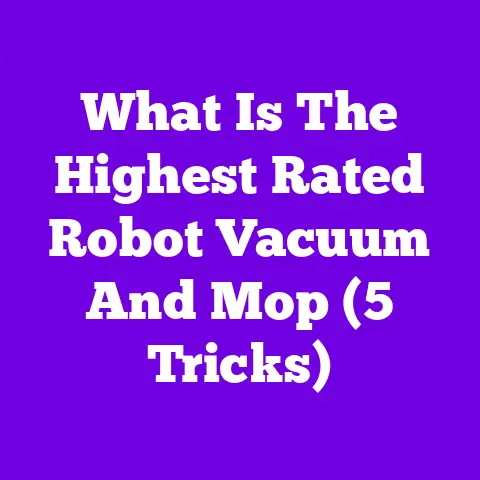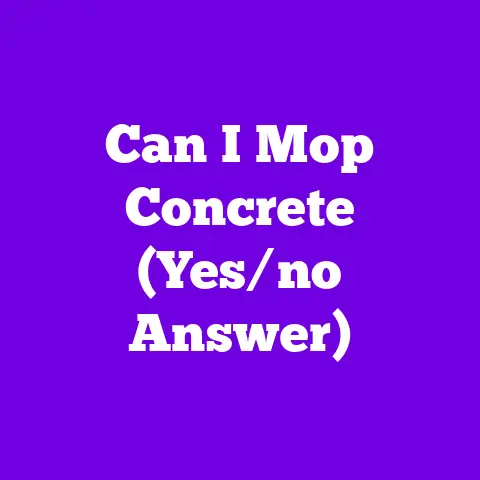Mop Buckets: Why Size and Shape Matter (Explained)
A good mop bucket is crucial for efficient and hygienic floor cleaning. The ideal bucket holds enough clean water to mop your entire floor area, keeps dirty water separate, makes mopping ergonomic, and maneuvers easily without spilling.
Choosing the wrong mop bucket size or shape can lead to back strain from bending over, dirty mop water getting on clean floors, needing frequent refills slowing you down, and struggling to move a heavy bucket around.
Armed with this advice, you’ll be able to confidently choose the best mop bucket to meet your mopping needs.
Bucket Capacity
One of the most important considerations is the interior capacity of your mop bucket. The size should be adequate to hold clean water for your entire floor area without needing frequent refills.
Generally, a 4-8 gallon bucket capacity is suitable for home use to mop 500-1000 sq ft. Commercial janitor buckets are 10-50 gallons for large spaces.
Make sure to evaluate both your total floor area and how often you want to refill when deciding on bucket capacity. Mop bucket interiors have gallon markings to guide volume.
Bucket Shape and Dimensions
The overall shape and dimensions of a mop bucket impact stability, how heavy it is to carry when full, and ergonomics.
Rectangular buckets around 14” x 11” x 16” are common for home use. Commercial grade options are larger and deeper. Consider weight when full, usually 4-8 lbs for plastic home buckets.
Wider, shallower buckets are more stable with lower centers of gravity. But narrower, deeper shapes allow you to submerge mops fully for better water absorption.
For ergonomics, ensure side heights allow you to use the bucket without excessive bending or straining your back. Handle length and grip areas should also suit your height.
Double Bucket Design
A key mop bucket feature is whether it has one or two internal buckets.
Double bucket designs separate clean water from dirty water to prevent cross contamination. The inner bucket has perforations to wring mops out back into the outer bucket.
Single bucket options are simpler and cheaper. But constantly re-soaking dirty mops in increasingly dirty water is unhygienic.
Double buckets cost a little more but are strongly recommended for proper cleaning. The inner bucket is easily removable for cleaning both compartments.
Bucket Materials and Durability
Mop buckets come in a variety of materials like plastic, metal, rubber and more. Key factors are durability, weight, rust resistance and price.
Plastic buckets are affordable, fairly durable options for home use. Look for heavy duty plastic construction that resists cracks, chips and chemical damage from cleaners.
Metal buckets like stainless steel are extremely durable for commercial use but heavy. Plastic-coated metal options balance strength and weight.
Consider if your mop bucket will see heavy daily use or stay sturdier with careful use. Match bucket material durability to your cleaning frequency and methods.
Wheels and Mobility Features
Larger mop buckets can get extremely heavy when full, making them tricky to carry and maneuver.
Many commercial mop buckets have wheels on the base or attachable caster frames. This allows rolling the filled bucket from area to area without lifting.
Wheeled bases provide great mobility for commercial mopping of large spaces. But they do raise the bucket height requiring more bending.
Caster frames add wheels while allowing removing the bucket itself for cleaning. Not all home buckets accommodate caster frames so check dimensions if needed.
Specialty Features and Accessories
Some mop buckets have handy extras like built-in mop wringers, side press wringers, detergent measuring cups, and more.
Side press wringers allow squeezing out mops using a spring-loaded rack with a foot pedal. This saves hands from touching dirty mops.
Detergent cups allow convenient measuring directly into the bucket. Look for markings in ounces, cups or milliliters depending on your cleaning products.
Consider if any specialty add-ons will genuinely improve your current mopping process or just overcomplicate things.
Top 5 Mop Bucket Recommendations
Now that we’ve covered key factors on mop bucket size, shape, features and accessories, here are my top recommendations:
1. O-Cedar Quick Wring Bucket
This double bucket system has a flip wringing mechanism to squeeze mops without contact. Durable plastic with built-in casters and 10 gallon capacity.
2. Rubbermaid Commercial Bucket with Wringer
A sturdy plastic double bucket with wheeled yellow mop wringer. Holds 14 gallons with molded grips and pouring spout.
3. Continental Girly Girl Mop Bucket
Cute pink stainless steel bucket with press wringer and wheels. Holds 4 gallons for smaller cleaning jobs. Easy mobility.
4. Homegear Microfiber and Cotton Mop Bucket
Affordable plastic double bucket with spinning mop wringer, detergent cup and durable cotton/microfiber mop heads included. Decent home starter kit.
5. WaveBrake Commercial 35-Quart Mop Bucket
Large rugged commercial bucket with WaveBrake baffle wall to separate clean and dirty water. Tough enough for industrial cleaning.
Conclusion and Key Recommendations
Choosing the right mop bucket takes some careful consideration – take stock of your space sizes, flooring types, mopping frequency and your own physical needs.
Focus first on adequate water capacity, a double bucket design, durable materials to suit your use levels, then any extras if needed.
The best all-around home mop bucket is the O-Cedar Quick Wring Double Bucket system which strikes a great balance of size, portability, features and price.
But evaluate the pros and cons of your options against your own mopping needs. And don’t underestimate the importance of your mop bucket – it makes all the difference for effective floor cleaning!
Frequently Asked Questions
What size mop bucket do I need?
For home use, a 4-8 gallon mop bucket capacity is recommended to clean 500-1000 square feet of floor area. Measure your total floor space needing mopping then choose an appropriately sized bucket.
Are double bucket mop buckets really necessary?
Yes, double bucket systems are strongly recommended to keep clean and dirty water separate. This prevents dirty mop water getting reintroduced to your floors. Single buckets are cheaper but unhygienic.
How heavy should a loaded mop bucket be?
Focus on a filled weight you can reasonably maneuver without strain or spilling. For home use, look for plastic mop buckets around 4-8 lbs when full. Wheeled commercial buckets distribute heavier weights better during transport.
Can any mop buckets accommodate caster wheels?
Caster frames allow adding wheels to many buckets. But ensure your specific mop bucket dimensions have frames made to properly fit. Not all home buckets work with casters so measure first before purchase.
How do I clean a mop bucket?
Plastic and metal mop buckets should be cleaned regularly. Empty all water and use a detergent solution with a scrub brush on all surfaces. Rinse thoroughly then allow to fully dry before refilling and reusing.






